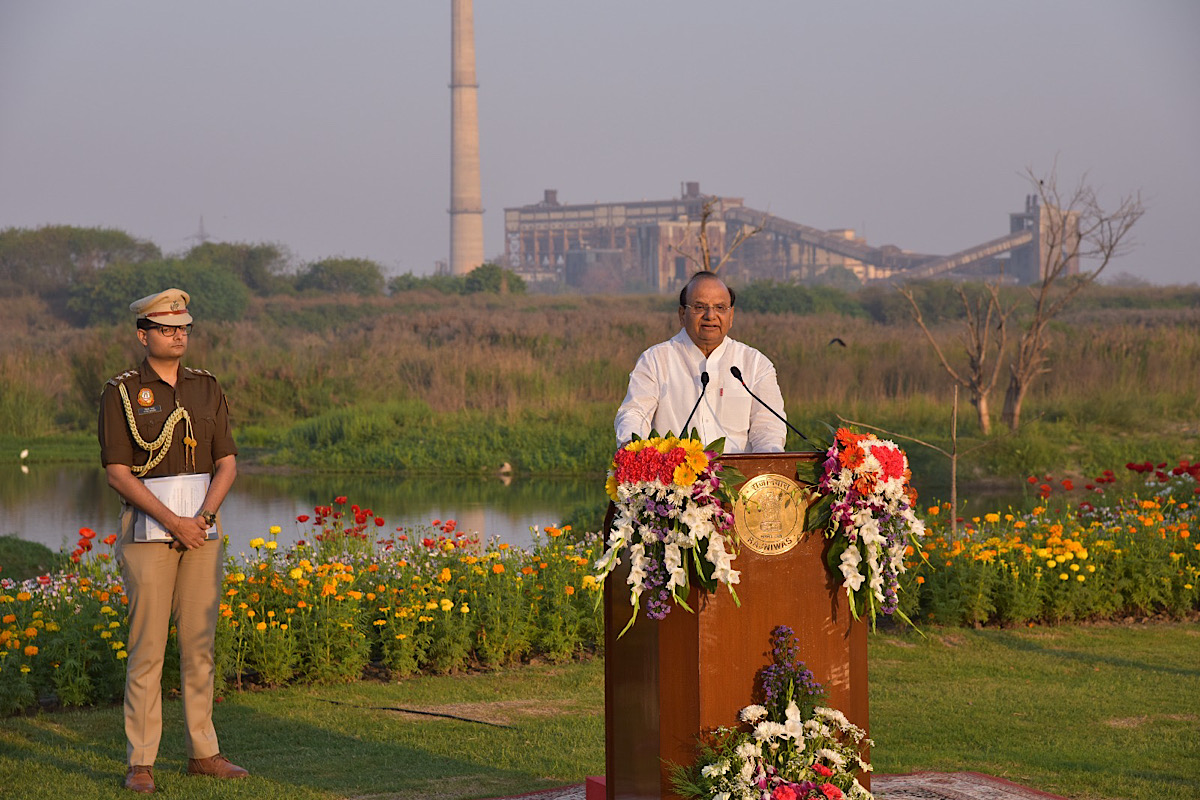In an effort aimed at showcasing Delhi’s natural heritage before the world leaders congregating in the National Capital in run up to the G20 meet, Lieutenant Governor V K Saxena on Sunday hosted the diplomats at Asita East on the floodplains of Yamuna river, which has been restored and rejuvenated by the DDA as a breathable public green space in a record time of less than six months.
Minister of State for External Affairs Meenakshi Lekhi was also present on the occasion. G20 Sherpa Amitabh Kant and the Chief Coordinator for G20 Harsh Vardhan Shringla along with Chief Secretary, GNCTD, Delhi Police Commissioner, Vice Chairman DDA and other senior officials from various stakeholder agencies also participated.
Advertisement
Ambassadors and other diplomats of 11 countries visited Asita East early morning and went on a nature trail and bird watching tour along the floodplains, spotting over 30 species of birds.
Housing varied flora and fauna, including rare migratory birds, the complex has evolved into a paradise for birders, in a short span of time.
The diplomats also went cycling through the vast grasslands of Asita East. Considering the eco-sensitive character of the floodplains, the visitors left their vehicles right at the entrance on Vikas Marg and took electric carts to reach the floodplains. Some of the visitors also preferred walking down to the floodplains.
Visibly impressed by the turnaround of this stretch of the Yamuna Floodplains in a record time of less than six months, the foreign diplomats appreciated the rich bio-diversity and the efforts undertaken to restore the ecological character of the Yamuna.
Saxena lauded the efforts that have gone into rejuvenating the Yamuna Floodplain and exhorted all stakeholders to put in collective efforts in undoing the destruction caused to the natural heritage due to rampant urbanization.
“Asita has been our own effort at such rejuvenation. Just 6 months back, this fragile riverine ecosystem was a dump yard of waste, squatters and stray animals. Persistent efforts by DDA have resulted in salvaging a self-contained ecosystem that houses rich natural diversity,” Saxena said.
“Though the Yamuna floodplains remain fragile, efforts are being made to restore and rejuvenate Delhi’s natural heritage that is crucial for making Delhi environmentally sustainable with a refurbished green blue ecosystem,” Saxena said.
Spread over 90 hectare of floodplains, Asita East has been restored through the universal principles of ecological restoration by restoring the natural depressions, creating the catchment zones, reviving the floodplain forests and grasslands and creating favourable habitats especially for water and terrestrial birds.
This floodplain, due to years of neglect, had degraded into a dumping ground and was largely encroached upon by the squatters. However, with the intervention of the Delhi High Court, the squatters were removed and the entire area was reclaimed by DDA.
Asita East has a restored wetland of about 2.5 hectare size that is augmenting more than 60 million litres of water. It has a plantation of 4000 native trees of the floodplain ecosystem and about 3.35 million riverine grasses planted in a record time of just six months.
All this has attracted about 63 varieties of resident and migratory birds this winter to make it their home. An interactive public zone has been designed with large congregation spaces, nature trails, cycle tracks and a selfie point.











